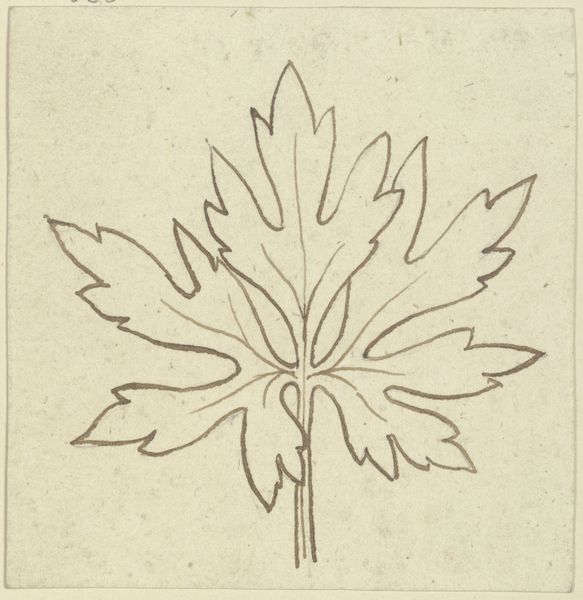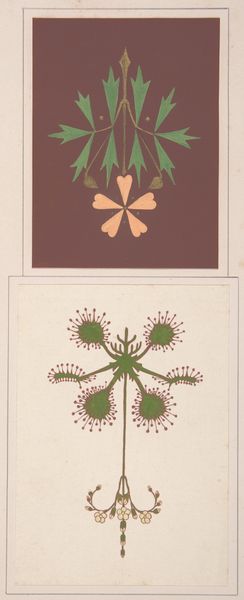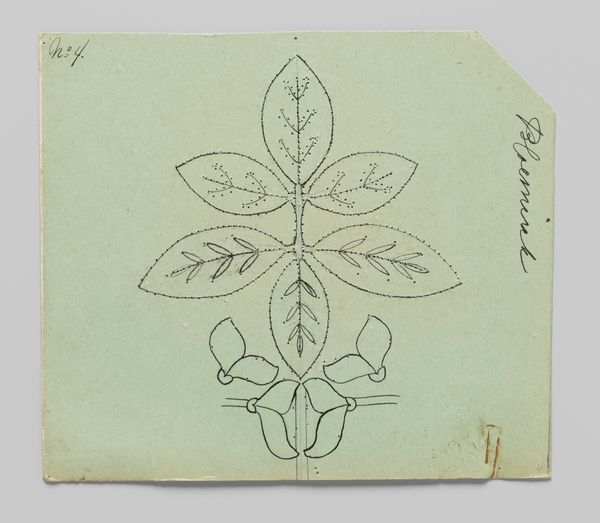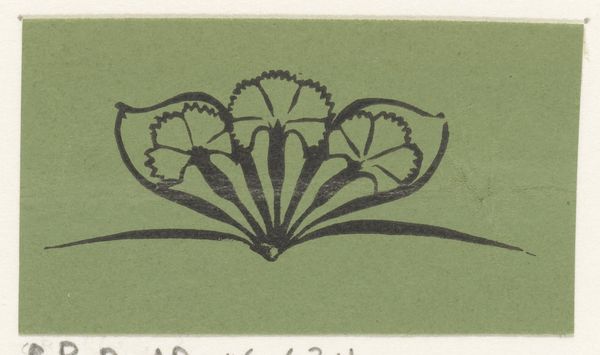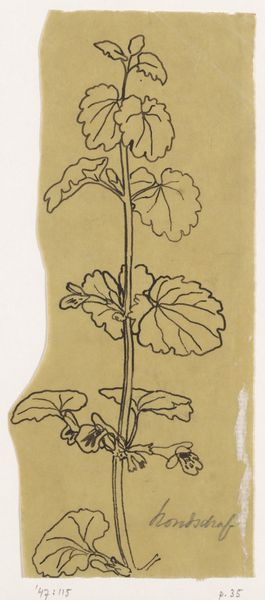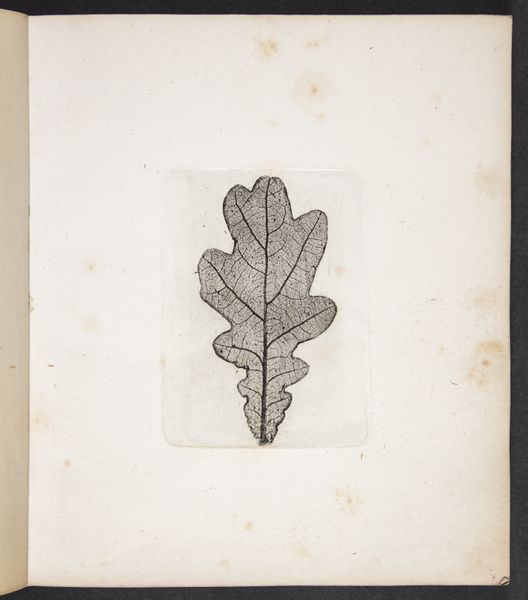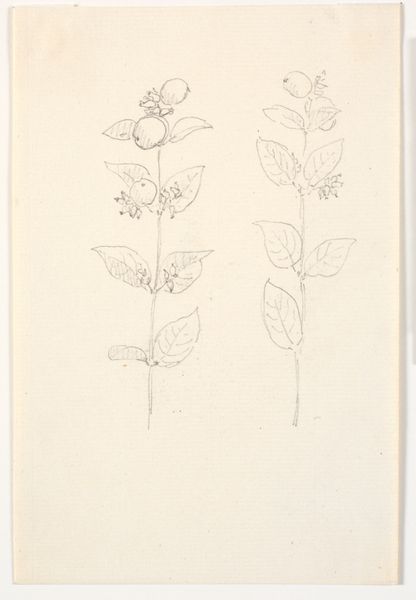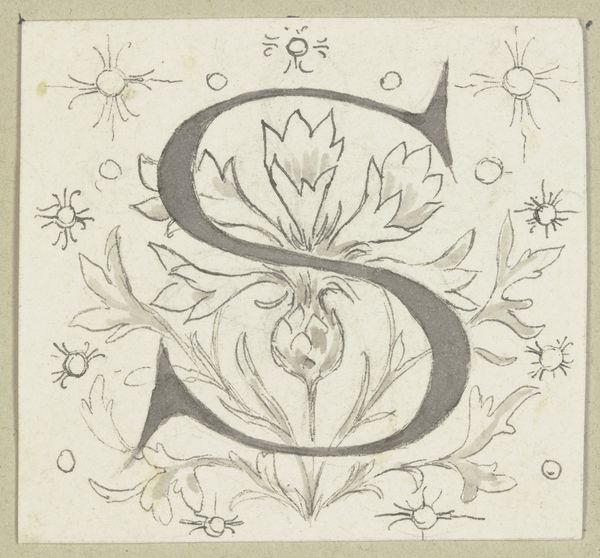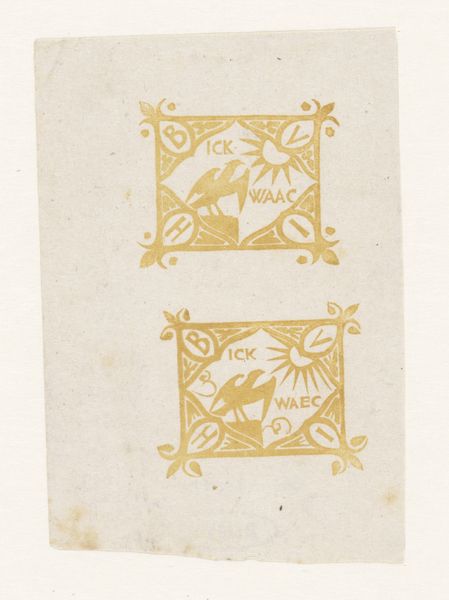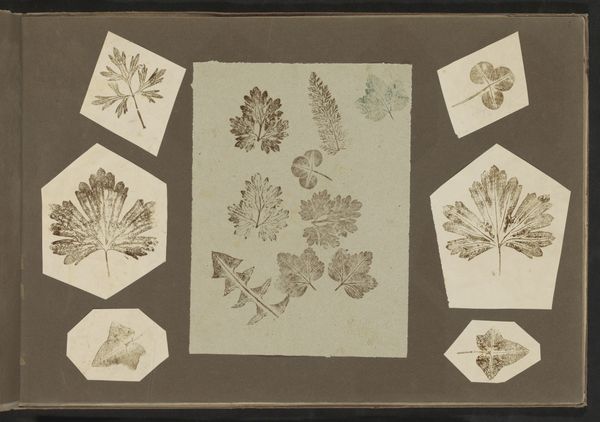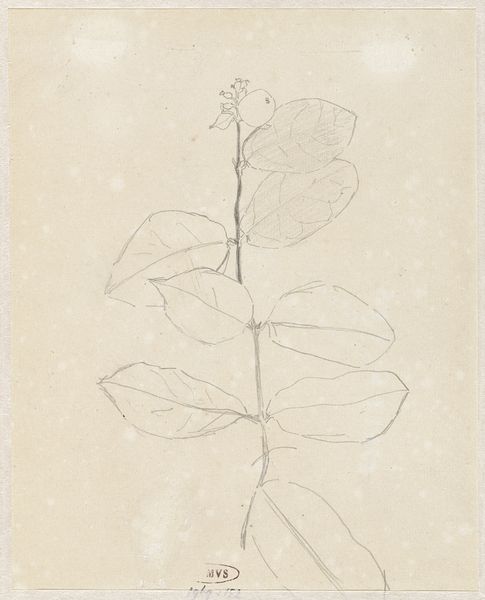
drawing, graphic-art, print, paper, ink
#
drawing
#
graphic-art
#
art-nouveau
#
pen drawing
# print
#
woodcut effect
#
paper
#
ink
#
geometric
#
pen-ink sketch
#
line
#
pen work
#
sketchbook drawing
Dimensions: height 46 mm, width 50 mm
Copyright: Rijks Museum: Open Domain
Curator: Let's turn our attention now to “Blad met bloesem,” a pen drawing by Reinier Willem Petrus de Vries, dating roughly between 1884 and 1952. Editor: It has such a lovely, subdued feel. I'm drawn to the economy of the lines, especially how the artist suggests texture and form so minimally. There’s almost a woodcut quality about it. Curator: That reflects the wider Art Nouveau movement which, of course, deeply influenced De Vries. We see that interest in organic forms and decorative patterning. There was a real effort to integrate art into everyday life. Editor: Exactly. And the production! This isn't some grand oil painting meant for a wealthy patron. It’s ink on paper, lending itself to reproduction and wider circulation. What was its original purpose do you think? Curator: These designs, given the era and style, were very likely destined for the world of book illustration or perhaps even textile design. Art Nouveau sought to erase the boundaries between fine art and the decorative arts, and that included new forms of printmaking that put art into the hands of everyone. Editor: The artist’s hand is really present; you see the varying pressure in the lines of ink on paper, which shows a direct link between design and physical work. And the simplified floral motif — so elegantly captured with such modest materials! It speaks to the value of skilled labor and affordable beauty. Curator: And let’s not forget the social context; movements like Art Nouveau took off just as urban populations swelled and industrialized production concentrated labour in cities. So a simple design of nature took on extra resonance. It wasn't just decor, it was also about bringing something essential into artificial lives. Editor: Yes, a deliberate counterbalance! I find the artist’s engagement with these everyday materials particularly moving. It underscores art's accessibility and its democratic potential, far from the stuffy galleries. Curator: Absolutely, and these prints gave opportunities for artists to work outside traditional studio and gallery settings, which broadened participation. This design’s influence is really profound, and can still be found today in illustration or textile production. Editor: Thinking about materiality certainly provides fresh ways to consider production practices during this fascinating period in art history. Curator: And seeing the work as a bridge between elite and popular art forms enriches our sense of social dynamics back then.
Comments
No comments
Be the first to comment and join the conversation on the ultimate creative platform.
